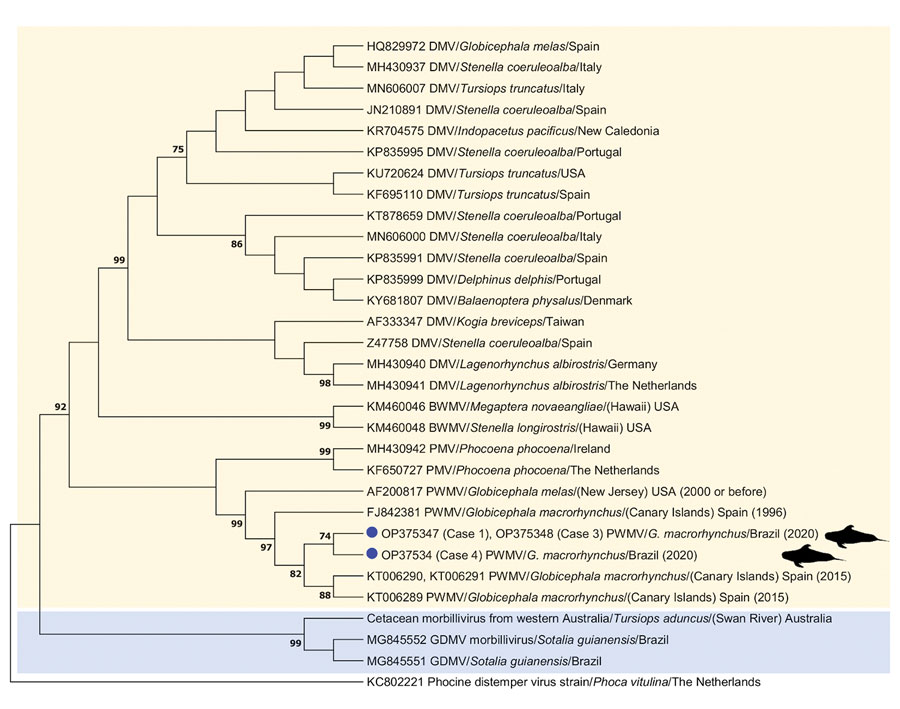Short-Finned Pilot Whale Strandings Associated with Pilot Whale Morbillivirus, Brazil
Samira Costa-Silva

, Carlos Sacristán, Rodrigo M. Soares, Vitor L. Carvalho, Pedro V. Castilho, Marta J. Cremer, Ana Carolina Ewbank, Arícia Duarte-Benvenuto, Thalita Faita, Pedro E. Navas-Suárez, Jenyffer V. Vieira, Letícia G. Pereira, Carolina F. Alves, Gabriela C. Souza, Giulia G. Lemos, Natália Silvestre-Perez, José L. Catão-Dias, and Lara B. Keid
Author affiliations: Universidade de São Paulo, São Paulo, Brazil (S. Costa-Silva, C. Sacristán, R.M. Soares, A.C. Ewbank, A. Duarte-Benvenuto, T. Faita, P.E. Navas-Suárez, N. Sivestre-Perez, J. Catão-Dias); Centro de Investigación en Sanidad Animal (CISA-INIA), CSIC, Madrid, Spain (C. Sacristán); Associação de Pesquisa e Preservação de Ecossistemas Aquáticos, Caucáia, Brazil (V.L. Carvalho, L.G. Pereira); Universidade do Estado de Santa Catarina, Laguna, Brazil (P.V. Castilho, C.F. Alves, G.C. Souza); Universidade da Região de Joinville, Sâo Francisco do Sul, Brazil (M.J. Cremer, J.V. Vieira, G.G. Lemos); Universidade de São Paulo, Pirassununga, Brazil (L.B. Keid)
Main Article
Figure

Figure. Maximum-likelihood phylogenetic tree based on Hasegawa-Khisino-Yano model with inversions gamma distribution and invariant sites of the phosphoprotein gene nucleotide sequences of cetacean morbillivirus PWMV obtained in Brazil (this study, blue circles), PWMV sequences previously described, and other morbillivirus strains described in cetaceans available from the GenBank/DDBJ/EMBL databases. Phocine distemper virus was selected as outgroup. The sequence identifier shows GenBank accession number, virus type, and location. Yellow shading indicates strains comprised in Cetacean morbillivirus lineage 1; blue shading indicates strains in lineage 2. Numbers at nodes indicate the bootstrap value; 1,000 bootstrap replications were selected, and bootstrap values <70 were omitted. BWMV, beaked whale morbillivirus; DMV, dolphin morbillivirus; GDMV, Guiana dolphin morbillivirus; PMV, porpoise morbillivirus; PWMV, pilot whale morbillivirus.
Main Article
Page created: December 09, 2022
Page updated: December 22, 2022
Page reviewed: December 22, 2022
The conclusions, findings, and opinions expressed by authors contributing to this journal do not necessarily reflect the official position of the U.S. Department of Health and Human Services, the Public Health Service, the Centers for Disease Control and Prevention, or the authors' affiliated institutions. Use of trade names is for identification only and does not imply endorsement by any of the groups named above.
